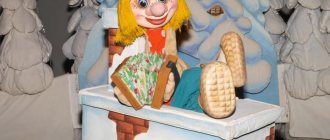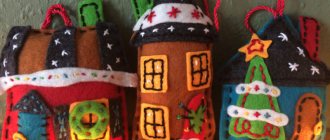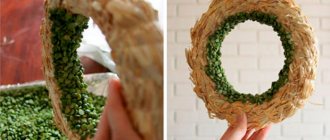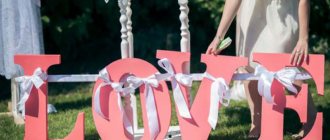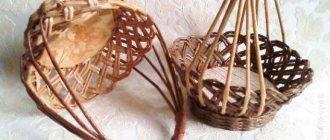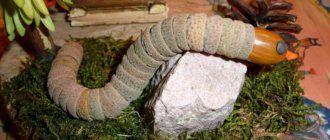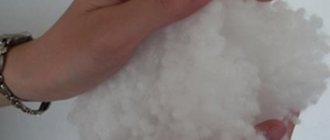Interest in space and its mysterious beauty evoke a desire to create.
A large number of crafts on this topic coincide with the celebration of Cosmonaut Day.
This holiday gives you the opportunity to believe in your dreams. After all, man has long wanted to learn how to fly high in the sky, and now, as if in a fairy tale, such a dream has come true.
People continue to conquer the vastness of the universe.
The benefits of making crafts
By involving children in making crafts that can be used to decorate a home, group, classroom, or formal hall, an adult creates in children satisfaction from collective festive activities.
It wouldn’t hurt to mention the world’s first cosmonaut, the creators of rockets, and walking on the moon. Let children know from an early age who made the dream come true.
In addition, the child learns a lot of new things: how a rocket works, what kind of work astronauts do, what the solar system is, what the planets are made of, how many civilizations exist, how they go into outer space.
Children have the most incredible questions.
We can satisfy their curiosity, because the desire to be explorers and discoverers grows in little people. And there are still so many mysteries of space.
Space applique
Even small children can make this application. After all, the manufacturing technique is as simple as possible.
Paper rocket
A very beautiful applique can be made for children for Cosmonautics Day. Despite the simplicity of the image, these crafts look great:
- First we select the background, it is blue, dark blue, black.
- We will lay out the pre-prepared parts of the craft on colored paper or cardboard. Children from 3-4 years old can cope with this work.
- Details - the main part of the rocket, a round window, triangular wings. We glue everything one by one.
- Paste it carefully. We decorate the sky with golden stars.
- Children of older groups will perform a more complex applique. They themselves draw the parts according to the template and cut them out. Details are placed on the background.
A rocket made of silver paper on a black outer space background, impressive:
- cut out the nose and wings from blue paper;
- round windows - portholes, made of red, on which we apply smaller white circles;
- highlight the back compartment with a blue stripe, put a cut-out fire from red paper, put a yellow cut-out on it, it is smaller in size.
It remains to depict 2-3 planets and stars. The beauty of the craft is obvious.
Volume applique
The same craft made from corrugated cardboard looks great. The paper parts are glued to the background, and the same cardboard parts are glued to them with double tape. The result is a three-dimensional application.
From beads and beads
On drawings depicting constellations, draw stars using a stencil:
- Select small beads and seed beads in yellow, red, and blue colors.
- Apply glue to the outline, lay out the ornamental material along the outline, then small beads and beads, distribute evenly with a stick over the entire star. It turns out beautifully.
- So we fill all the constellations with decor.
Choose the background at your discretion.
Using the same technique, you can make other objects: the moon, a comet, a satellite, to the main decoration, it doesn’t hurt to add elements of voluminous decorative stickers and distribute them along the contour.
Cardboard postcard
On the outer part of the postcard, depict a rocket with a cut-out porthole; the astronaut, depicted on the inside and glued to a paper spring, should look out of this window:
- We must try to ensure that the image of the face in the helmet falls exactly into the lens of the window.
- The color of the postcard is blue, with a brilliant image of the object.
- We draw one or more astronauts according to the template, color them, and cut them out.
- We make a spring from a small strip of paper folded into an accordion. Glue one end to the card, the other to the person.
- We unfold the postcard and see the starry sky, an astronaut who has “walked” into outer space.
Salt dough rocket
Children are given a rolling pin to roll out a piece of dough, cut out the body according to the template, the windows can be removed, holes can be left in this place, or an overhead window can be made:
- Add a triangle-shaped bow and compartments to the main craft, and add fire too.
- Cut out using a star shape. We pierce all the products, leaving holes for making a pendant. If desired, the product can be used this way.
- Place the product in the oven to dry.
- Color with colors at the child's discretion.
- Now our rocket can fly to distant stars. On a purple or blue background, spray white paint - small stars. Glue the craft.
Master class on making a model “Dunno in the Flower City”
Irina Evgenievna Parieva
Master class on making a model “Dunno in the Flower City”
Getting acquainted with the work of N. Nosov, everyone liked the idea of creating a model of the Flower City . The guys set to work with great desire. Of course, first we had to make houses for the shorties.
For this we needed: foam cubes, deep disposable plates, flower (large and small)
from
colored paper , colored paper for windows and doors, stapler, glue, felt-tip pens .
First, we cut out windows and doors colored with felt-tip pens . We glued the windows and doors onto foam cubes:
Then we started creating the roof: blanks of large flowers (you can cut them in half)
over the entire area of the plate, decorated with small
flowers :
It turned out something like this:
Everyone did it differently, so the houses turned out different:
I came up with the idea of making a house out of a large paper popcorn bucket. For this we also needed colored napkins , the same flower , colored paper :
We covered the bucket with napkins, cut out the windows and door, decorated the windows and roof with flowers , and made a edging from corrugated tubes. It turned out like this:
Our houses turned out to be bright, all in flowers . Of course, there must have been a lot of flowers the Flower City . And we started creating flower beds .
We wrapped small baskets with bright greenery (the manufacturing technology is not new , but the most common, so we will not describe it in detail):
The baskets were filled with a wide variety of flowers . The children themselves chose which flowers they would make and from what:
These are the flowers made from corrugated tubes:
And these roses:
You can make daffodils from white petals :
From paper cut into fringes, magnificent chrysanthemums and hyacinths are obtained:
And then work began on the formation of the layout . We began to install our houses on a base covered with green paper, and now the little ones began to settle in our city . The children planted or placed their favorite little dolls at each house:
appeared in our city :
The culmination of our work was the appearance of Dunno in our city (here we could not do without the help of adults - and the old doll turned into a cheerful Dunno in a chic suit and an amazing hat):
The work is finished, this is the Flower City we ended up with :
The kids are happy and proudly show everyone their creation!
Drawing
Of all kinds of artistic creativity, the theme of astronautics is best expressed in a drawing.
You can depict a rocket, as well as spaceships, lunar rovers, satellites. Kids are just starting to use paints, but older children can do more serious work.
Preschoolers should be asked to draw a drawing of an astronaut in a helmet, a rocket, and the earth:
- We divide the sheet into three parts and roughly outline where the figures will be.
- On the right side we draw a large round head, a rectangular body, arms and legs in voluminous clothes.
- Inside the circle we draw a square - a spacesuit. Let's draw the person's face.
- On the left we draw a round earth. You can draw a circle according to the template to depict the continents.
- At the top of the picture is a spaceship, we draw it small, it is in the background, the child will do it himself: a triangle, a circle.
- A cord stretches from the ship to the astronaut’s spacesuit, draw a line. Our hero in outer space!
- You can decorate with colored pencils, crayons: Blue earth, a bright astronaut suit, everything is at the child’s discretion.
It is advisable to paint over the entire sheet of the drawing, without leaving any white spots.
With younger schoolchildren, you can depict more complex objects, use a palette, and mix paints.
Having depicted satellites, ships, planets with a simple pencil, you need to paint over them with suitable colors, in addition to this, we make the background of the picture from mixed colors, for example, blue, cyan, a little red, mix, paint over the surface, you get a mysterious space.
Or you can start the image not with objects, but with the background: paint a sheet of paper blue and purple, add blue, white, spray white, yellow paints, when dry, draw white objects on a beautiful background - an astronaut, a ship, a planet. The drawing is a miracle!
Craft made from colored threads “Dunno” based on the fairy tale “Dunno on the Moon”
A. Mikhaleva, 1B grade. “Craft from colored threads “Dunno” based on the fairy tale “Dunno on the Moon.”
The craft is made of colored wool threads (red, yellow, blue, white, black, dark blue, light brown, green, purple), PVA glue, cardboard, and scissors were also used in the work.
Having learned about the competition on the website, Anya and I, a big lover of fairy tales and books, began to think about what kind of hero we would like to create. At that time, we were reading Nikolai Nosov’s book “Dunno on the Moon,” which Anya really liked and she always looked forward to the evening to read the next batch of stories about her favorite hero.
Dunno has been a favorite hero since childhood, and reading stories about his adventures has always been very exciting and interesting for me, too, so after finishing reading the book, we decided that Dunno should definitely become a participant in the competition. We thought for a long time about what to make our favorite hero out of. At first the idea came to mold it from plasticine, but we decided that it would not be so bright and colorful and not very original. I wanted to use some unusual technique to make it look original and at the same time be interesting for Anya to do this work.
That same evening we were cleaning out the closet where we have creative materials and found a box with multi-colored threads, it was real luck! Threads! We thought this was a great idea. Bright, colorful, soft and fluffy - they were definitely suitable to make Dunno bright and unusual. But first, we had to draw Dunno on a sheet of cardboard and select the color scheme for our craft. Anya and I drew Dunno and began to select the colors of the threads. To make the craft neat, we first practiced - we cut threads of different lengths and glued a “test” Dunno. So we established that thin threads look better long, and thick threads look better a little shorter. In fact, carefully gluing the threads turned out to be not as easy as it seemed at first glance, especially on small parts of the design - it was a very painstaking and intricate work that required perseverance and concentration, but Anya did an excellent job, not without difficulties, of course. The most difficult part of the work was laying out the threads on the small parts - the nose, eyes, mouth, handles and making sure that the threads did not mix with each other and did not get dirty with glue, and also that the glue did not have time to dry while we were gluing the threads onto the cardboard. It was also difficult to find certain thread colors (sky blue, light brown).
But, despite the difficulties, Anya really enjoyed working with threads, and I am pleased that we ended up with a wonderful exercise for developing fine motor skills and imagination. In our opinion, Dunno turned out very well, and Anya enjoyed the process of creating it!
(0x0)
Volumetric rockets
This craft is good because you don’t need to use craft tools. You can do them on the road, during a walk, and then include them in an interesting game:
- Take a square sheet, white or colored, bend it in half, then straighten it out.
- Bend the sides in the middle and straighten them again.
- The result was three stripes of folds: one in the middle, and one on each side of the craft.
- Now bend the upper corners towards the middle.
- From this position, bend one side so that it matches the fold of the other side, and bend it back again, now the folded side coincides with the central fold.
- Also on the other side.
- We turn the craft over, we have a body, nose, wings.
- You can cut the wings and bend the corners. We draw the details and launch the rocket into space!
Foam craft
Let's take a foam plastic blank in the form of a cone, paint it blue, let the bow part be pink, the rear compartment blue, make pink wings and a yellow window out of paper, and glue it. Crumple the corrugated red paper and glue it to the back - fire. Five minutes, the flight is normal!
Cardboard sleeve
Very convenient material, almost ready-made craft:
- We glue two bushings with hot glue, this is the body.
- We cut the soft sleeve, glue three or four small cylinders from it - this will be the engine, and glue it inside the body.
- 4 wings, cut out and glue on.
- We glue a cone on top - the bow of the ship. Adding windows.
- We will color the craft at our own discretion.
Plasticine astronaut
Let's roll a ball, this is a head in a helmet:
- We roll 5 sausages, make a spacesuit by rolling a larger piece of plasticine into a spring. The rest of the sausages are also spirals - arms, legs.
- Orange gloves, boots. Let's put it together, we get an astronaut.
- To highlight the face, mark the parts: nose, mouth, eyes. And we will make the front part of the spacesuit from part of a transparent plastic bottle.
Universe layout
On dark-colored cardboard, draw thin orbits with white paint. In the center is the Sun, the closest orbit is Mercury, then Venus, the Earth with its satellite - the Moon, Mars, Jupiter, Saturn, Uranus, Neptune, the last one is Pluto, but not all of it is included in the solar system.
We make the sun from corrugated yellow paper: we glue thin strips or pieces tightly to each other onto a disk of cardboard, we do not glue it completely, some of the paper remains free, especially along the edge of the circle - scorching rays.
We cut out the remaining planets from cardboard and color them.
The entire craft should occupy no more than a third of the table. The layout can be hung on the wall, in front of the eyes of a student or preschooler.
We respect the proportions:
- The largest of the 9 planets is Jupiter, light orange in color, then the planets go in descending order of size:
- Saturn, light yellow, paint on the rings,
- Sea green uranium.
- Neptune blue,
- Land of blue.
- Mars is red.
- Venus of yellow,
- Mercury is grey.
- Pluto is small in size and gray in color.
- There are so many circles of different colors and sizes that need to be made.
We highlight craters, spotted, wavy surfaces with paint and add white.
You can note the satellites of Mars - there are two of them, Venus and Mercury do not have them.
Other planets have many satellites; it’s a matter of choice; if you wish, you can teach the children their names and numbers.
Papier-mâché planet
Any planet can be made like this: inflate a balloon, cover it with glue, glue newspaper, used office sheets, and unnecessary paper:
- We do not seal the tail of the ball where the strings are tied.
- Let the work dry overnight.
- Then we pierce the balloon and pull it out.
- We paint the craft blue with yellow spots. This is our Earth with its continents.
- Other planets can be made in a similar way.
- We take balloons, inflate them to different volumes, observe the proportionality of the planets, cover them with paper waste, about 3-4 layers of paper, wait for each layer to dry. Then we paint and varnish the craft, otherwise the gouache may smear.
Rocket from boxes
It is best to take boxes from under tall refrigerators, cut out a door, a window, decorate the rocket at your discretion, and sign it. Fold the bow part from the top of the same box. Cut out the wings from thick cardboard and glue them on. Turn on the Starry Sky night light and you can imagine flying into space.
For story-based and role-playing games, a rocket from half a box is suitable. The box should be the height of the child:
- We make the front part: a body with a front wall, and two halves of the box walls on one side and the other, which help to hold the front part.
- We cut out a window onto which we glue a cardboard ring - a porthole.
- Decorate the rocket with stars.
- You can make an inscription, draw a Russian flag.
This is time-consuming work, and an adult must help with advice or action.
It is great that from an early age, children are introduced to public, significant holidays that are celebrated both in Russia and abroad.
Children develop a sense of belonging to the celebrations, and the basis of a festive culture is formed.
It wouldn’t hurt to mention the world’s first cosmonaut, the creators of rockets, and walking on the moon. Let children know from an early age who made the dream come true.
The topic of space is a good platform for intellectual development, an ongoing source of educational information.
Parents play a significant role when, together with their children, they participate in making crafts and talk about what they themselves know. This is not just leisure, but a kind of unity between adults and children, where everyone feels like a significant person.
Master class “Dunno from foamirin”
Nina Minchenko
Master class “Dunno from foamirin”
Now, in our corner of educational and experimental activities, we have the most suitable character - the Dunno .
Why did you choose this doll?
According to Nosov himself, Dunno has a life prototype:
“This is a child, but not one who can be called by name and surname, but a child in general, with a restless thirst for activity inherent in his age, an ineradicable thirst for knowledge and at the same time with restlessness, the inability to keep his attention on one subject for any long time time - in general, with all the good inclinations that the child has to strengthen and develop, and with the shortcomings that need to be gotten rid of.” (Nikolai Nosov)
Dunno is a charming, lively, sociable character. He loves everything bright (that’s why the colors in his clothes are so awkward)
.
“talents”
he has ! Draw, write poetry? Please, one or two and you're done! True, the portraits look more like cartoons, and the poems look more like teasers. But this also requires skills.
Dunno will now come to our classes no longer in the “picture”
, but in a live form.
And together with Dunno we will master new things, comprehend the unknown.
Dunno doll . First, I found a photo of Dunno . There were no patterns, and all the details of clothes and shoes were made “on the spot”
.
So, I’ll list what you need for the job:
1. Foamiran : blue, green, flesh-colored, red, yellow.
2. Foam plastic balls with a diameter of 65mm - 4 pcs.
(head-1, torso-1, shoes-2)
3. Glue gun, ruler, 2 long skewers, scissors.
We make shoes. It’s correct if these are foam balls of different diameters: a large ball is the nose, a small one is the heel. But I made the best of what I had. The missing height of the heel was additionally glued with polystyrene foam.
Head. Paste over half of the ball “face”
.
Glue the “hair”
;
We put the brim of the hat on the ball and glue it. We measure a strip of fom for the top of the hat and glue it along the inner circumference of the brim. We collect them into a “sheaf”
and tie them with a rope.
Torso. For the doll's body , it is best to use a cone - I have a ball. Cut off the side of the ball on one side (the flat part is the doll’s tummy)
. We glue the upper part of the body in the form of a cone made of thick cardboard.
We dress Dunno . According to N. Nosov’s description, Dunno canary-colored pants. I decided to sew him light brown shorts.
To connect the halves of the cut out legs, I glued a strip from the wrong side. Thus, they glued together without any problems.
The outfit was complemented with a belt accessory in the color of the tie.
We connect the head to the body with a skewer. We put Dunno on his feet , “put on his shoes”
.
All that remains is to draw the face.

